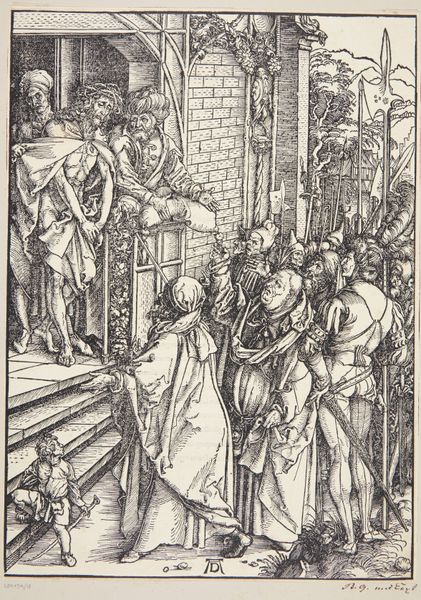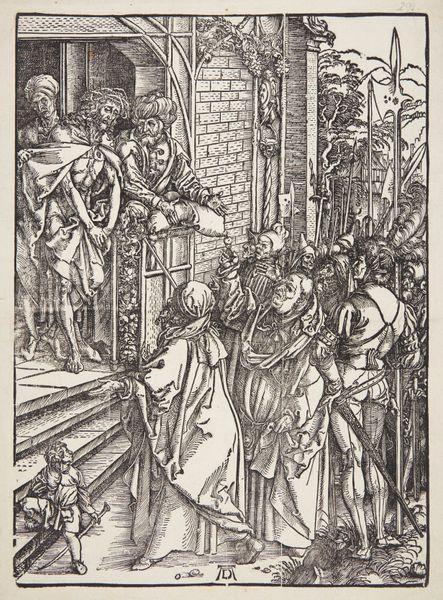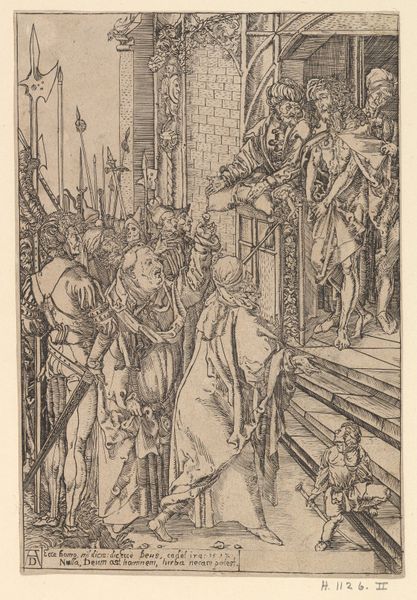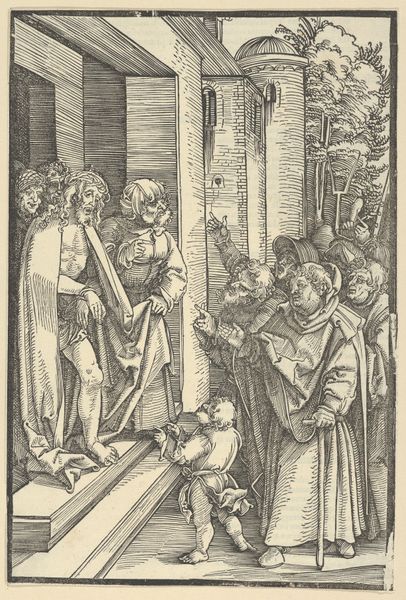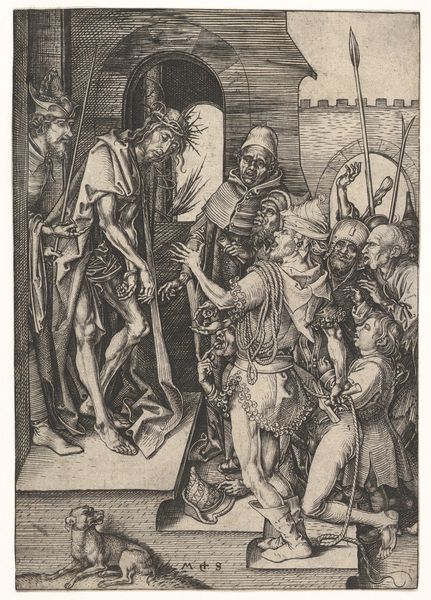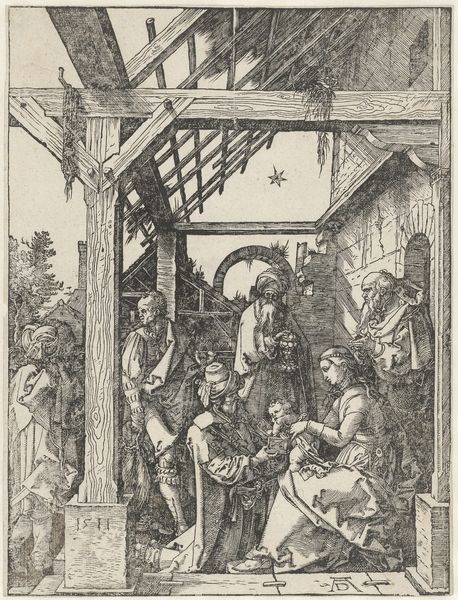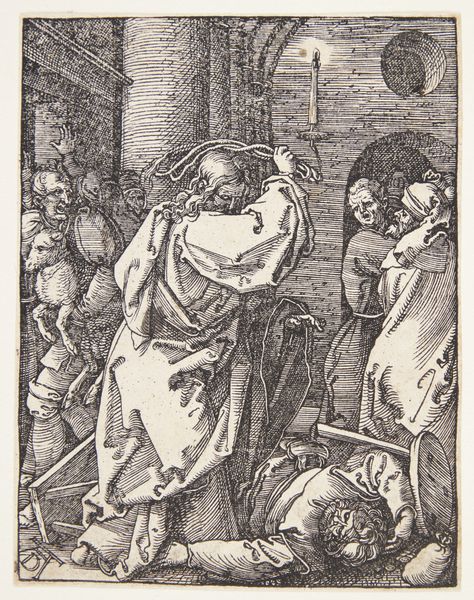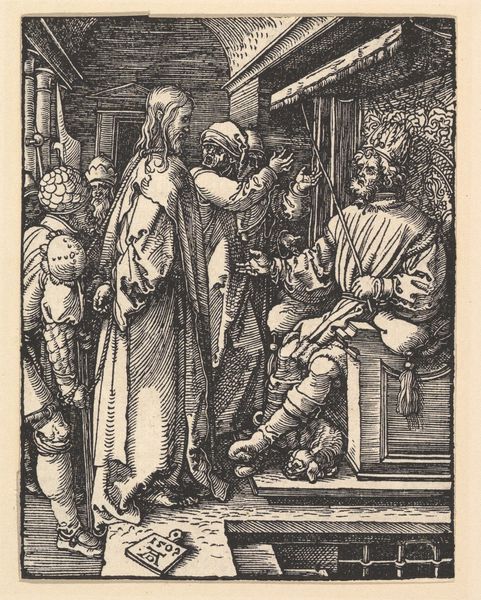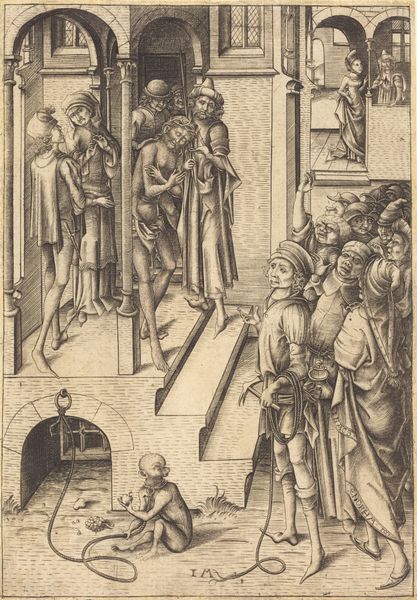
Dimensions: 410 mm (height) x 299 mm (width) (bladmaal)
Curator: Albrecht Dürer’s woodcut, "Ecce Homo – The Presentation of Christ", created between 1496 and 1499, plunges us into a moment of profound tension. What strikes you immediately? Editor: The density of line! It’s almost suffocating. Look how Dürer uses hatching to build volume, but also to create a palpable sense of emotional weight, of a crowd pressing in. The stark black and white emphasizes the drama. Curator: Indeed. This work belongs to Dürer's "Great Passion" series, a set of woodcuts that aimed to visually narrate the Passion of Christ for a broad audience. It’s a highly political moment. Editor: Ah, the politics are right there in Pilate’s gesture, presenting Christ to the masses. It's about public perception and control of the narrative as much as faith, I suppose. The setting reinforces this too. Look how the crowd below is framed by classical architecture; symbols of law, order, power! It makes you wonder about the role that authorities wanted art to play at the time. Curator: Precisely. Structurally, it’s fascinating how the composition leads the eye. From Pilate enthroned above, to Christ being displayed on the left, with that incredible dynamic energy implied as Christ descends a set of steps towards us, with the dense crowd mirroring the chaos about to come. The way he has created the architectural framework is incredibly important to notice. The viewer can trace the various frames to explore where to direct focus and attention in a calculated format. Editor: Absolutely. Dürer’s skillful use of the medium – the crispness he achieves with woodcut – lends the scene a sharpness, an uncomfortable clarity. We, as viewers, become part of this public display, implicated in the unfolding drama. Curator: The very starkness in his medium draws focus to the detail within the lines. A reminder that the artist directs an emotional path using not only what the image consists of, but by careful choices within his toolset and the craft within his visual vocabulary. A perfect harmony to direct meaning and message. Editor: It leaves one reflecting on the weight of judgment, the power of the crowd, and the manipulation of perception. A powerful work to analyze. Curator: A masterpiece of printmaking, really forcing us to consider how historical narratives have always been tied to visual representation and also to technical choices within it.
Comments
No comments
Be the first to comment and join the conversation on the ultimate creative platform.
